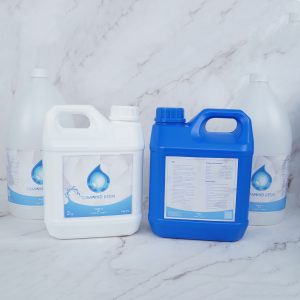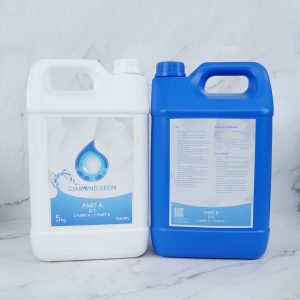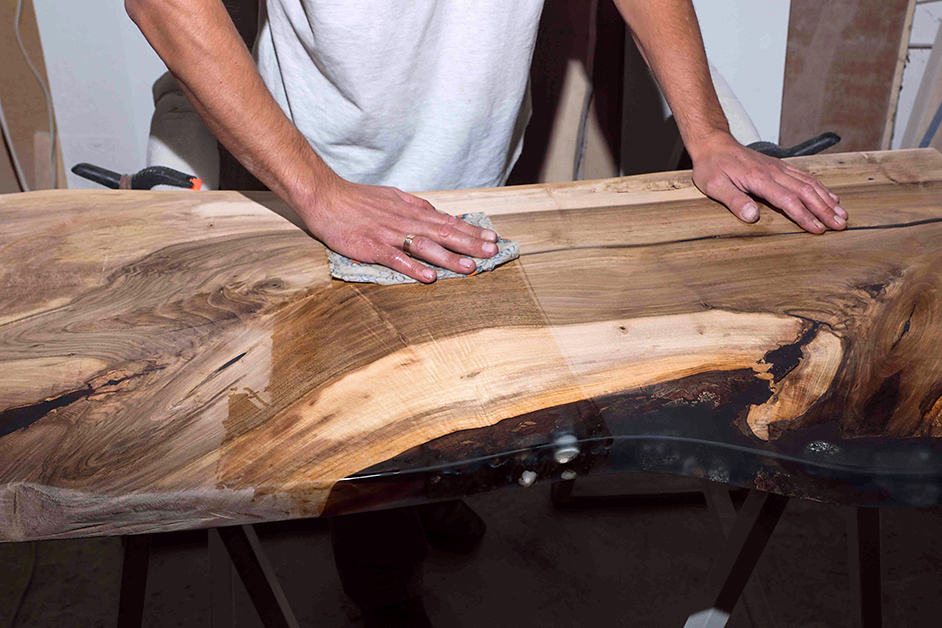When choosing your epoxy, it is important to take note of the material you are going to be working with. Marine-grade epoxy is what you will need if your project is going to be exposed to or submerged in water. This could include things like boat repairs, repairing of pipes, amongst other projects. The various epoxies available each have their own features, which in turn have pros and cons attached to it. So, by doing a bit of research and getting informed, you will be able to choose the correct marine epoxy resins suitable to your needs.
What is Marine Epoxy Resins?
As mentioned, marine epoxy resins are needed for those projects that are going to be constantly exposed to water. Think of a boat hull and underwater pipes, which is submerged in water. You need epoxy resin that is durable, versatile, and reliable, especially if it is going to be exposed to a harsher environment. Once the marine epoxy resin has fully cured, it becomes waterproof and offers great strength.
Choosing the correct Marine Epoxy Resin
When the time comes to buy your marine grade epoxy resin, you need to consider a few things. This type of product can be purchased as a thick liquid or paste. For the thick liquid, you can get a filler powder, which allows you to thicken when needed. Otherwise, the thick past resin includes a hardener when you buy it.
Helping you make the right choice you need to consider the following:
- You need to choose the epoxy that is best suited for the project you are working on.
- Always check the shelf-life, an epoxy resin product should be used according to the recommended date. You might encounter problems if the use-by date has expired.
- A liquid epoxy along with a filler is a better choice, as these products are all ready to go when required, especially in an emergency.
- Make sure to follow instructions when it comes to mixing the resin and hardener. Take note of the time you have to work with the epoxy resin. Remember, take note of any requirements related to temperature as well as humidity.
- Do some research, you will come across polyester resin, which is considered a resin, but it does not have the durability and strength the epoxy resin has.
- Always wear protective wear when working with epoxies such as gloves and eye goggles. Have ready some mixing sticks and containers for your epoxy.

- Bonds with fiberglass, wood, etched aluminum, and bare steel and lead
- Easy to apply by brush, roller, syringe, spreader, or by pouring
- Kit comes with resin, hardener, pumps, and pump calibration instructions

Marine Epoxy Resin Applications
All epoxy resins are similar and have bonding, coating, sealing as well as water-resistant properties. This makes epoxy resin great for a variety of applications. The different types of resin you get are your tabletop resins, art resins and, of course, the clear marine epoxy resin. The marine-grade epoxy is more often used in structural boat repairs and maintenance.
This specific type of epoxy can be used with a variety of materials including:
- Fiberglass
- Wood
- PVC
- Ceramic
- Certain Metals
- Concrete
- Types of plastic
Best Marine Epoxy Resin
TotalBoat Epoxy Resin Kit for large areas

- Include enough 5:1 marine epoxy resin and hardener to complete a variety of boat building, composite construction, and epoxy repair projects. For use on wood, fiberglass, reinforcement fabrics, etched aluminum, bare steel, and lead. Not suitable for clear-coating applications
- Ideal viscosity for wetting out fiberglass cloth and other reinforcement fabrics. Self-leveling properties are ideal for coating and laminating. Combine with fillers to make a high-strength, moisture-resistant fairing compound, filleting material, or adhesive
- Pot life ranges from 12 minutes @ 75°F for Fast Hardener, to 20 minutes @ 75°F for Slow Hardener. Cures to a high-strength, moisture-resistant, light amber plastic solid that can be sanded and shaped
You can easily apply this marine epoxy using various tools such as a brush, syringe, roller, or spreader. You can also just take the resin and pour it over things like lead, wood, reinforcement fabrics, etched aluminum, and bare steel. This particular marine grade epoxy when cured provides excellent durability. The marine epoxy also protects from moisture and once it cures, forms a solid plastic that appears amber in color. This is not a Clear marine epoxy.
The TotalBoat Marine Epoxy Kit contains the following:
- Resin and hardener
- Mixing items
- Plastic cups for mixing
- Gloves
- Container Pumps
The container pumps have already been adjusted so they provide exact amounts. All you need to do is add five full pumps of resin to one pump of hardener. The TotalBoat Epoxy Resin works well with all other 5:1 marine grade epoxies. You can also choose between kits that include either quartz or gallon sizes. There is also a selection of fast or slow hardener.
Let us have a look at some Pros and Cons to TotalBoat Epoxy Resin
Pros
- Can easily be used with all other marine grade epoxies
- The marine epoxy is self-leveling, which is perfect for coating and laminating
- The kit comes with epoxy and hardener pumps, providing exact amounts
- Comprehensive kit that can be used on numerous repair or building ventures
Cons
- Can’t really use the resin in cold weather conditions
- Not suitable if you are looking for clear marine epoxy
- A two-part epoxy cold weld system that provides strong, lasting repairs to multiple surfaces. Perfect for all DIY marine and watercraft repairs.
- After mixing the tubes at a 1:1 ratio, it takes 4-6 hours to set and 16-24 hours to cure
- Once cured J-B Weld MarineWeld can be tapped, filled, sanded, molded and drilled. J-B Weld MarineWeld’s set and cure color is dark grey
If you need small repairs done on your boat, then this two-part epoxy cold weld system will provide you with superior results. The marine grade epoxy is tough and can tolerate even the harshest environments. The final cured product can also be shaped, filed, sanded, and drilled as required.
Setting time for the marine epoxy takes around four to six hours and is fully cured by 15 to 24 hours. When the epoxy has fully cured, it is darkish gray in color. You can even compare this epoxy to steel once cured, as it becomes so hard and strong. Durable and a wise choice for all your boat or related repairs.
The product itself is fairly simple to use and can be done by most anybody, no need to call in a professional. Can be used for a variety of projects and applied to many surfaces like aluminum, metal, fiberglass as well as plastic and wood.
Let us have a look at some Pros and Cons to J-B Weld MarineWeld Marine Grade Epoxy
A general guide to using Marine Epoxy
Let us have a look at a few basic steps when using your marine grade epoxy.
- Begin by roughening your surface you want bonded, by using some good quality sandpaper. You can also try draw-filling spots. Once done, always make sure your surface is clean of any dust, dirt, or grease.
- Now, take the provided syringes and cut off the tip ends. Hold it upright and then push it down slowly into your resin and hardener. Make sure any bubbles move to the top.
- After this is done, take the double plunger and push down. Make sure to use a clean container or plate you can dispose of. Otherwise, use the epoxy tray.
- Gently pull back on the plunger, wipe any residue from the tip and close with cap.
- Next, stir your resin and hardener thoroughly for several minutes.
- At this point you can add a small amount of adhesive to the item you want bonded. Gently, set it up and then steadily push together. Each product may have differing curing or setting times, so always have a look at the manufacturer’s instructions.
- Finish by removing any surplus epoxy.
Pros and Cons of Marine Epoxy Resins
Pros
- Strength and durability
- Strong bonding and adhesion properties
- Creates a bond to a variety of surfaces
- When curing, it has little shrinkage
- Damage and moisture resistant
- Has fewer toxic hardeners
- The epoxy has a long shelf-life
Cons
- Product is expensive
- Has low resistance to UV
- May not bond effectively with a Gelcoat
- While applying, it might be susceptible to environmental changes
- You need to be extremely precise when mixing the resin and hardener
Casting Resin
Casting resin is used for casting molds, it is especially popular in making jewelry. The resin is thinner than your coating resin and has a variety of mixing ratios for different applications. You can work longer with the epoxy resin because it has a slow curing time. The casting epoxy resins can be used for industrial applications. For example:
- Enclosing items
- Filling in gaps or spaces in wood
- Laminating of surfaces
Coating Resin
As the name implies, the resin is used for coating objects and can provide a surface for ceilings and floors. The resin helps to bond, coat, and seal objects. The resin is thicker than the casting resin and has a faster curing time. The coating resin usually also has easier mixing ratios.
The Epoxy coating resin usually supplies a clear finish, which can be used for things like:
- Surfboards or a boat deck
- Overlaying of furniture and other objects

UV Resistant Marine Grade Epoxy Resins
The epoxy, by itself, does not come with UV resistant properties. UV Resin is UV resistant, usually have an additive included. The UV additive is added to help prevent any yellowing of the resin over time.
Applications
There are UV Resistant Marine Grade Epoxy Resins available, which provides a longer duration of its non-yellowing effect. The UV resin is an excellent product to use for boat building applications as well as in the process of manufacturing fiberglass. UV resins are also used for smaller projects such as in the making of resin jewelry. The resin is also excellent in sealing small areas and works best as an epoxy resin adhesive.
UV Resistant Epoxy Pros and Cons
Pros
- Fast curing time with the use of UV light.
- There is no wearisome mixing involved
- The resin has a longer processing time, so no need to rush
Cons
- The product is more expensive than regular epoxy resin
- The shelf-life of UV Resin is short, 6 months.
- You can only apply thin layers of UV Resin, and you require several 3mm-4mm layers.
- For the curing process to work effectively, you need a UV lamp.
Polyester Resin
This consists of unsaturated synthetic resins, which can be composed of a variety of different polyesters. Polyester resin is a major player within the composite industry.
Polyester Resin Applications
The polyester resin has many applications and can be used in many different types of projects. The resin is popular in the boat building industry and in repairing plastic items. Some of the more popular applications include the sealing of things like Jacuzzis and swimming pools. The product can also be used in various outdoor construction projects that require weather-resistant properties.

Polyester Resin Pros and Cons
Pros
- Polyester resin is a lot more affordable
- You can determine the processing time by adding more or less hardener to the polyester resin. The weighing and measuring must be done accurately for a good result.
- The design time is more flexible
- You have your choice of reinforcing fabric for your building projects. Glass fiber mats or fabrics etc.
Cons
- During processing, there is a definite odor
- When compared to epoxy resin, the polyester resin falls short in many areas. Polyester resin is less water-resistant and durable.
- Polyester resin does not bond to smooth surfaces such as glass or metal.
- High shrinkage rate
Polyurethane Resin
Polyurethane resin is also a synthetic resin and a type of plastic. The resin is very versatile as it can be used in a variety of applications. The resin can be altered to form materials that are pliable or into something more rigid or hard. In most cases, the polyurethane comes in liquid form, which can then be poured into molds. Additives and fillers can also be added to the polyurethane resin, which can produce the properties you want in your end product.
Polyurethane Resin Applications
As mentioned, the resin is versatile and can be used in both industrial as well as by those at home. Here are a few applications for polyurethane resin:
- Paints can be created from Polyurethane resin, as well as adhesives and other coatings
- Casting tires and mold casting
- Encapsulating electronic components and parts
- Production of foam
- Floor coatings
Polyurethane Resin Pros and Cons
Pros
- Easy to work with
- Has a workable viscosity, which helps to cast and shape it as desired.
- The resin easily accepts a variety of additives and fillers
- Little shrinkage occurs during the curing time
- After curing, it has a high resistance to heat
- You do not have to wait long to de-mold objects
- Hardens quickly
Cons
- You need to include additives to increase its UV resistance
- After curing, you cannot weld it.
- There are emissions or odors during the curing period
- Adhesion properties are not as good as the epoxy resin
- The resin is moisture sensitive, which reduces its durability
Repairing your boat with Marine Epoxy
In many cases, a boat may have incurred more damage than just on the surface. The core structure of the boat may have been affected. If this is the case, repairing the boat will require expertise and knowledge as well as time and money. You may want to think about getting in a professional for this type of job.
The modern fiberglass boats tend to be stronger than wooden boats, but this does not mean any damage will not occur. If your fiberglass boat has been damaged, you have to first evaluate what and how much damage has occurred. You will have to decide whether you will be able to fix the damage or does something need to be replaces altogether.
Once the problem has been pinpointed, you can go ahead and repair or remove the damaged parts. The first step in repairs, is to prepare the damaged section for bonding. Also, if you had to remove your core material, always replace with the same, ensuring it has the same shape and thickness. When it comes to the fiberglass skin and you find that it is still whole, you can then make use of it again. However, if this is not the case, you can then make a new skin to cover the core. This should be done in several tapered layers of epoxy and fiberglass.
Marine Epoxy Paint
To finish off your boat repair or maintenance, you need to make it look good with some marine epoxy paint. Most paints are formulated to be effective for exterior applications, especially for marine environments. The paints usually add a layer of protection, water-resistance and can handle extreme conditions.
You will need to fist clean your surface you wish to paint. You will need to sand the clear marine epoxy until it becomes dull and wipe the surface. Then apply the marine epoxy primer, this takes a couple of layers. Finally, add your marine epoxy paint over the primer. Make sure to add a minimum of two layers of paint.

Preparing your boat for Marine epoxy paints
A few guidelines when preparing your boat for painting.
- Clean your boat completely, make sure all sand, dirt and grease has been removed. It may be best to clean the boat out of the water using a high-pressure hose, a scrapper, and old cloths.
- Raise any hardware you can from the boat or watercraft. Remove anything that should be removed, as you do not want water seeping into any cracks, which could cause damage. Any hardware you cannot remove should be covered with some painters tape to protect it.
- The waxy coat on the surface of the boat can be removed by using a solvent. Preferably use a watercraft solvent and a few coarse sponges. Make sure the waxy coat is completely removed.
- You can now do any repairs needed on the surface before you begin to paint. This is to make sure there will be no rough spots when the paint job is done. The repairs can be done with marine epoxy.
- Sand the boats entire surface down thoroughly with some 80-grit sandpaper, a random-orbit sander, or a finishing sander. This will ensure the paint covers the surface evenly and will help the Marine epoxy paints grip to the surface.
Taking care of your Epoxy Boats
To apply marine grade epoxy, you can use a brush or roller. But in order to do it correctly, the mixing method involves doing one pump of the resin followed by one pump of the hardener. This will ensure the epoxy produces a durable and strong cure, and you will not have to sand anything before each coat. However, you can sand immediately once the required coats have been applied for a more finished look. After this your surface will require little maintenance.
Depending on the type of material, you can choose the best epoxy resin for the job. This can be repairs or maintenance for your car, boat, or a variety of other materials. Marine grade epoxy will cure hard yet remain flexible enough to provide protection from salt water, fuel oils, mild acids and gasoline.
Marine grade epoxy is also manufactured to be durable and provide the utmost in protection on any surface, especially those that are exposed to harsh environments. Whatever project you are busy with, be it coating timber for boats, or simple plywood, you should apply at least two coats. You can easily do this with a paint roller or brush, which should coat the wood completely and will guarantee a durable surface or item.
Also, the coated surface should remain securely fastened and it should be watertight against any moisture. So, since it preserves the wood even better than primer or paint, the wood should be protected and last a long time.
Questions and Answers
What marine epoxy brand is the most popular?
Getting your money’s worth is important, so you want to choose a brand that has quality products. You need to look for brands that also offer durability and reliability for their marine grade epoxy products.
Some of the more popular brands include:
- Loctite
- Old Timer Industries LLC
- J-B Weld
- TotalBoat
Where can you buy marine epoxy?
You should be able to easily find marine epoxy at your local marine supply shop. Otherwise, there is always buying online, where there are plenty of product options.
Pros and cons of shopping at your local marine supply store:
Pros
- Shopping at your local store gives you the opportunity to look and handle products
- Locally trusted and well-known company
Cons
- May not be well stocked
- Products may be limited
Pros and cons of shopping online:
Pros
- A vast selection of marine epoxy products to choose from.
- Offers more specials and discounts.
Cons
- May encounter fraudulent online shops, so make sure to only do transactions with legitimate sites
Obviously, both options have their pros and cons, so it is really up to you which one you prefer.

